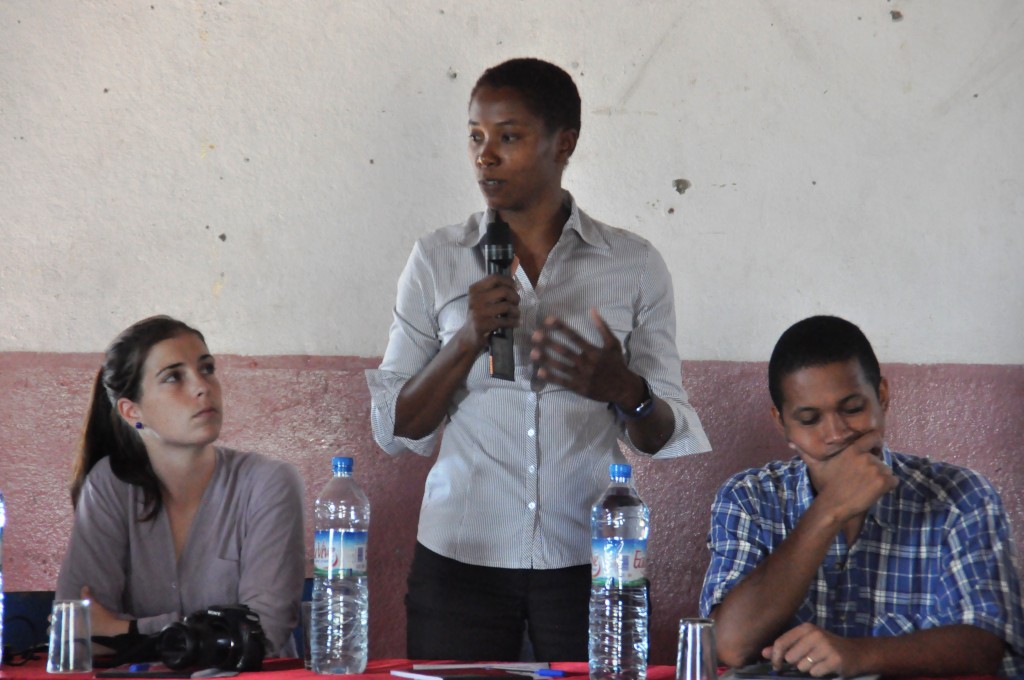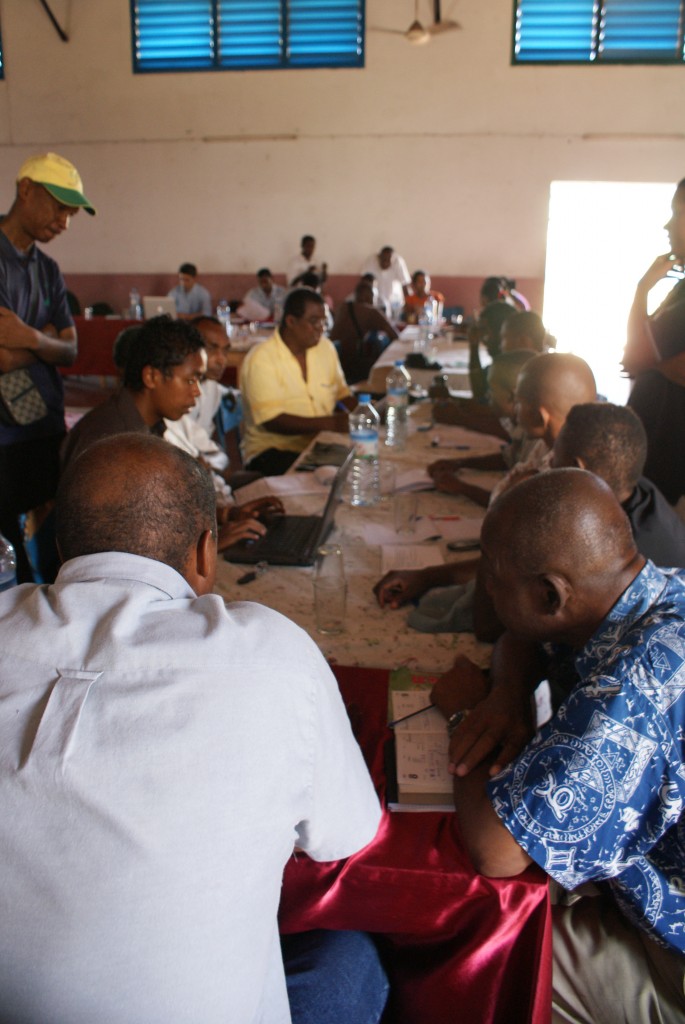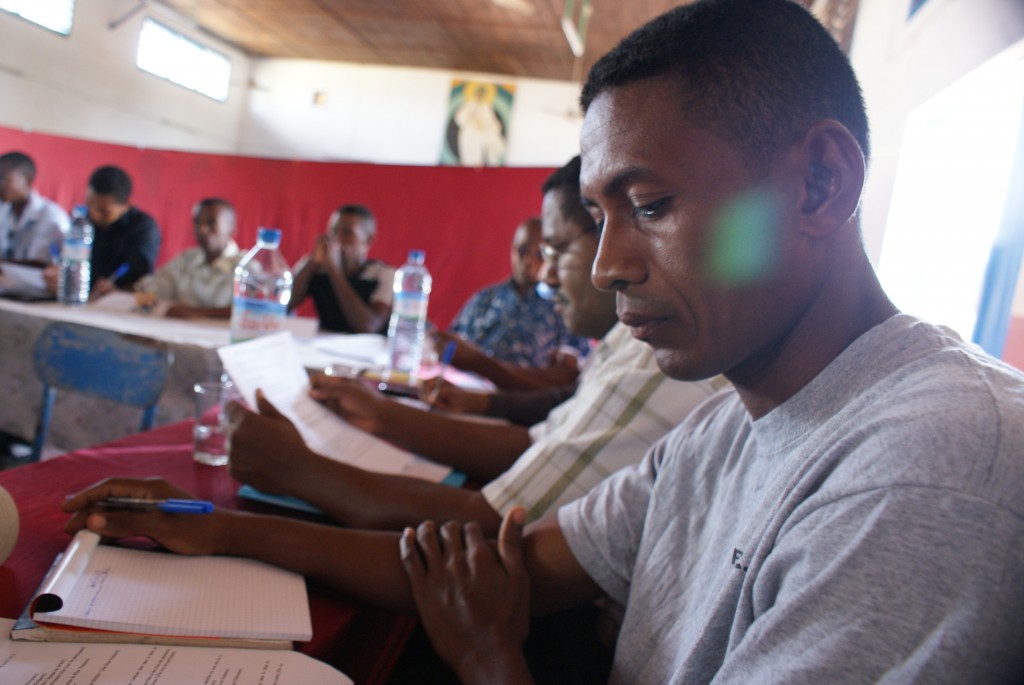by Kate England, Mangrove REDD+ Project Development Manager, Madagascar
It’s Wednesday morning and the Catholic school building in Morondava, western Madagascar, is just getting its first trickle of people – but this was not a regular school day and we were not here to learn Bible verses. On the steps of the large white and blue building, VIPs were in waiting… the director of the Regional Department of Environment and Forests, the director of Rural Development for the Menabe region, the representative of the Regional Minister of Economy, even a journalist was in tow to watch the day’s events unfold. Everyone had been invited to talk about one hot topic – BLUE CARBON.
If you are familiar with the work of Blue Ventures’ Blue Forests project, then you know that we are working with communities, private stakeholders, other NGOs and authorities to develop projects for the sustainable management of mangrove forests. One of the reasons mangroves need to be conserved is because of their significant role in reducing and mitigating CO2 emissions. Blue carbon projects that conserve and restore mangrove habitats have the potential to attract carbon finance as a sustainable income.
Blue Ventures has partnered with WWF Madagascar and Western Indian Ocean to study how feasible such a project would be in the Tsiribihina Delta – one of Madagascar’s largest mangrove forests and host to truly unique people and biodiversity, plus a suite of threats to go along with it.

Garth Cripps, Forest Carbon Finance Specialist, explains to workshop participants how blue carbon projects provide a potential solution to stopping mangrove deforestation
After a bit of milling about and several handshakes and introductions, around 9 o’clock, everyone settled into their chairs in the cavernous, but now buzzing, Catholic school building. Dannick, the project manager for WWF’s Tsiribihina conservation project (supported by the Helmsley Charitable Trust) gave the crowd of 52 people an overview of the activities for the next two days. Blue Ventures would introduce the foundations of blue carbon projects, the benefits they could bring to the people and mangrove forests of the Tsirbihina Delta, the potential negative impacts and the multitude of tasks that must be completed in order to get a blue carbon project rolling. These presentations were to be peppered with multiple question and answer sessions and group work, to get people thinking about how to creatively address the problem of mangrove loss.

Sylvia Paulot, Blue Forests scientist (second from left), introduces herself to delegates at the Tsiribihina Blue Carbon workshop. Kate England sits on the far left. Photo credit: Judy, WWF Madagascar & Western Indian Ocean.
A critical challenge of setting up a blue carbon project is fully communicating the full implications of the project to all of its stakeholders. Given the complexity of creating a carbon project and the enormous policy and market uncertainty, this is no small feat. With good reason, our team went into it with nervous anticipation and a strong remit to manage expectancies and dispel any misconceptions. What would our audience say to the significant challenges of preventing deforestation while at the same time providing alternatives to the incomes derived from this? Would there be suspicion of our intentions? Could we clearly communicate exactly what a blue carbon project is, and what this could mean to communities?
Our fears were for naught, though there was lively discussion on many topics – How could we develop alternative but complementary conservation incentives to carbon financing, which in itself is likely to be inadequate and still very uncertain? How do we communicate the project to communities in such a way that they are fully informed and able to make their own independent decisions on their participation? What shared benefits could each actor derive from the project and what would be the negative impacts of an eventual project? Through all of this discussion, everyone became enlivened and excited by the idea of an innovative approach to mangrove conservation, through harnessing the potential of blue carbon. Over these two stimulating days, workshop attendants developed a “declaration”, or a written agreement, stating that all parties agreed that a blue carbon project was a favourable way forward for conservation in the Tsiribihina Delta and that they supported its further development. Another result of this workshop was the creation of a “Blue Carbon Platform” for Tsiribihina, which will act as a decision-making and consultative body for planning out the next steps of a blue carbon project, with the input of all stakeholders.

Workshop attendants working together to discuss the define the causes of mangrove deforestation in the Tsiribihina Delta
One group of motivated people, one exciting new initiative, one absolutely irreplaceable delta – we all agreed to work together to save it!
Follow Kate on Twitter! @kate_england


